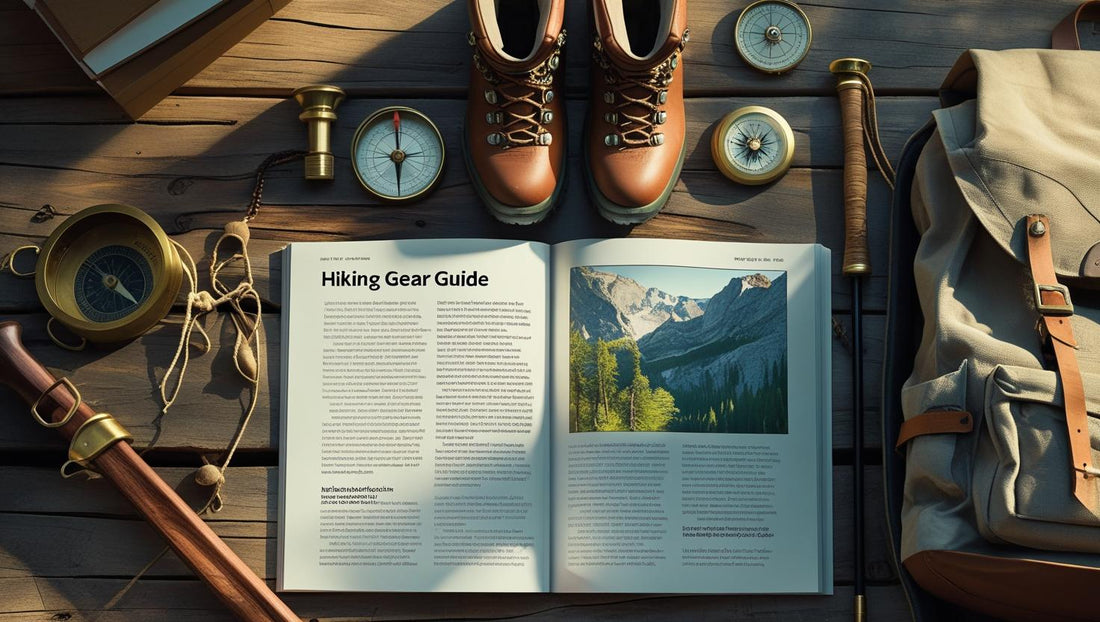
Complete Hiking Gear Guide for Beginners and Experts
Share
Introduction
Hiking is one of the most rewarding ways to explore nature—whether it’s the Himalayas, Sahyadris, or forest trails. But every successful hike begins with the right gear. In 2025, hiking essentials are smarter, lighter, and more durable than ever.
This guide is designed for both beginners and experienced hikers who want to pack smart, stay safe, and enjoy their trek without unnecessary weight. Let’s break down the ultimate hiking gear checklist you’ll need for your next adventure.
🏕️ Why the Right Hiking Gear Matters
-
Comfort: Prevents injuries, blisters, and fatigue.
-
Safety: Ensures you’re prepared for changing weather and emergencies.
-
Efficiency: Lightweight, multi-purpose tools make long treks easier.
-
Enjoyment: The less you worry about gear, the more you enjoy the journey.
🔑 Essential Hiking Gear Checklist
1. Rucksack or Hiking Backpack
-
Choose a 30–50L backpack for day hikes and a 60–70L pack for multi-day treks.
-
Look for padded straps, waterproof covers, and multiple compartments.
-
Trending in 2025: Eco-friendly recycled material backpacks that are lightweight and durable.
2. Footwear: Hiking Boots or Trekking Shoes
-
Waterproof, high-ankle boots are best for rocky and snowy trails.
-
Lightweight trekking shoes work well for short hikes.
-
Pro Tip: Always break in new shoes before a long hike to avoid blisters.
3. Clothing Layers
-
Base layer: Quick-dry t-shirts (avoid cotton).
-
Mid-layer: Fleece or light jacket for warmth.
-
Outer layer: Waterproof, windproof jacket.
-
Extra: Woolen cap, gloves, and thermal socks for cold-weather hikes.
👉 Travel-themed tees from Khojo Store are perfect breathable base layers for Indian treks.
4. Navigation Tools
-
GPS watch or smartphone with offline maps.
-
Traditional compass + paper map as backup.
-
Pro Tip: Always download maps before entering low-network zones.
5. Hydration & Nutrition
-
Hydration bladder or 1–2L reusable water bottles.
-
Water purification tablets or portable filters.
-
Energy bars, nuts, and lightweight dried fruits.
6. Camping & Shelter Essentials (for overnight hikes)
-
Lightweight tent or bivy sack.
-
Sleeping bag rated for the season.
-
Compact inflatable sleeping pad.
👉 New in 2025: Ultralight tents that weigh under 1.5kg without compromising strength.
7. Safety & Survival Kit
-
First-aid kit with bandages, antiseptic, and medicines.
-
Swiss knife or multi-tool.
-
Headlamp or flashlight with extra batteries.
-
Emergency whistle, fire starter, and reflective blanket.
8. Tech & Travel Tools
-
Power bank (10,000mAh+).
-
Solar charger for long treks.
-
Portable tripod for photography enthusiasts.
🎒 Tips for Beginners
-
Start with short hikes to test your gear.
-
Don’t overpack—carry only what you’ll need.
-
Invest in good footwear and a sturdy backpack first.
-
Always check the weather forecast before leaving.
⛰️ Tips for Experts
-
Use ultralight hiking gear to reduce fatigue on long trails.
-
Carry a satellite phone or GPS tracker for remote expeditions.
-
Upgrade to carbon fiber trekking poles for durability.
-
Explore modular gear systems—packs that adapt for multiple terrains.
Conclusion
Whether you’re a beginner setting out on your first weekend trek or an experienced hiker planning a Himalayan expedition, the right gear makes all the difference.
In 2025, focus on lightweight, durable, and eco-friendly hiking gear to keep your adventure safe and enjoyable. Pack smart, stay hydrated, and remember: the journey is as important as the destination.
